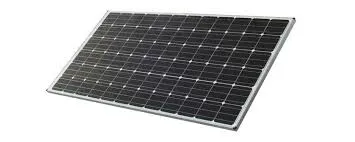Exploring the Cost and Benefits of 24% Efficient Solar Panels for Homeowners and Businesses
The Economics of 24% Solar Panels A Cost-Benefit Analysis
As the world increasingly shifts towards sustainable energy sources, solar panels have emerged as a key player in the renewable energy landscape. Among the various technologies available, solar panels with an efficiency rating of 24% have garnered significant attention due to their promising performance and potential long-term cost savings. This article explores the costs associated with 24% solar panels, the factors influencing their pricing, and the benefits they bring to both homeowners and businesses.
Understanding the Costs
The initial cost of solar panels has been a significant barrier to widespread adoption. Typically, the cost of solar panels is determined by factors such as the materials used, the technology employed, installation expenses, and regional market conditions. At present, 24% efficient solar panels tend to be on the higher end of the price spectrum compared to lower-efficiency models. However, it is essential to consider the overall value they provide.
On average, the cost of a solar panel installation in the United States has decreased significantly over the past decade, falling from over $7 per watt to around $2.50 per watt. While the upfront cost of installing 24% solar panels might be greater, their higher efficiency means that they generate more electricity in a given space compared to lower efficiency panels. This efficiency translates into greater long-term savings and a quicker return on investment.
Factors Affecting the Pricing of 24% Solar Panels
1. Research and Development High-efficiency solar panels often incorporate cutting-edge technology, which can drive up production costs. Manufacturers investing in solar cell innovation strive to improve efficiency and lifespan, which is reflected in the pricing.
2. Material Costs The development of 24% solar panels often relies on advanced materials like monocrystalline silicon, which tends to be more expensive than the polycrystalline alternatives. Supply chain fluctuations and raw material availability can also impact prices.
3. Government Policies Incentives, rebates, and tax credits significantly affect solar panel costs. Countries and regions that provide substantial subsidies can make higher-efficiency panels more affordable and encourage adoption.
24 solar panels cost

4. Market Demand As consumer interest in sustainable energy grows, the demand for efficient solar panels increases. This heightened demand can lead to fluctuations in pricing, especially in competitive markets.
Benefits of High-Efficiency Solar Panels
The potential benefits of investing in 24% solar panels extend beyond the initial expense. Here are some compelling advantages
1. Higher Energy Output Due to their efficiency, these panels produce more energy in less space. This is particularly advantageous for urban installations or properties with limited roof space.
2. Lower Long-term Costs Although the initial investment is higher, the long-term savings on electricity bills can be significant. Homeowners and businesses can recoup their investment faster, especially with favorable utility rates and net-metering policies.
3. Environmental Impact The more electricity generated from solar panels translates to reduced reliance on fossil fuels, decreasing greenhouse gas emissions and combating climate change.
4. Increased Home Value Properties equipped with solar panels often see an increase in property value. Buyers are increasingly looking for energy-efficient homes, and high-efficiency solar panels can make a property more attractive.
Conclusion
While the upfront costs of 24% solar panels may seem daunting, the long-term benefits and potential savings often outweigh these initial expenses. For homeowners and businesses alike, making the switch to high-efficiency solar technology represents a commitment to sustainability, energy independence, and financial prudence. As technology improves and costs continue to decline, the adoption of 24% solar panels could play a crucial role in shaping a greener and more sustainable future. Investing in solar energy is not merely a trend; it’s a necessity for those who wish to contribute to a more sustainable world.
-
Unlocking Energy Freedom with the Off Grid Solar InverterNewsJun.06,2025
-
Unlock More Solar Power with a High-Efficiency Bifacial Solar PanelNewsJun.06,2025
-
Power Your Future with High-Efficiency Monocrystalline Solar PanelsNewsJun.06,2025
-
Next-Gen Solar Power Starts with Micro Solar InvertersNewsJun.06,2025
-
Harnessing Peak Efficiency with the On Grid Solar InverterNewsJun.06,2025
-
Discover Unmatched Efficiency with the Latest String Solar InverterNewsJun.06,2025







